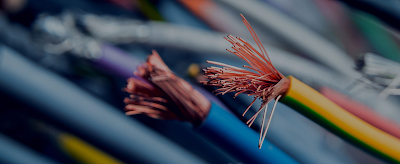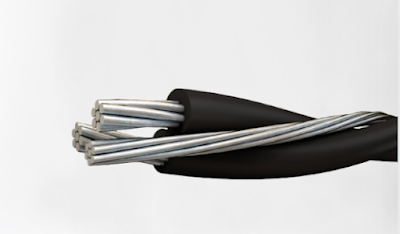What Metals are Generally Used in Electrical Cables?
Introduction:
Electrical cables are the unsung heroes of our modern world, facilitating the transmission of electricity from power plants to our homes and businesses. But have you ever wondered what materials lie beneath their insulating sheaths? In this comprehensive guide, we delve into the metals commonly used in electrical cables, shedding light on their properties, applications, and importance in powering our daily lives.
What Metals are Generally Used in Electrical Cables?
1: Copper - The Conductor of Choice
Copper stands as the cornerstone of electrical cable construction, thanks to its exceptional conductivity and malleability. Its high conductivity allows for efficient electricity transmission with minimal energy loss, making it the preferred choice for power transmission and distribution systems. Additionally, copper's flexibility and corrosion resistance ensure durability and longevity in various environmental conditions, making it indispensable in electrical wiring for homes, buildings, and industrial applications.2: Aluminum - A Lightweight Alternative
While not as conductive as copper, aluminum offers a lightweight and cost-effective alternative for electrical cables, particularly in high-voltage transmission lines. Its lower density makes it easier to handle and install over long distances, reducing construction costs and logistical challenges. However, aluminum cables require larger cross-sectional areas to achieve comparable conductivity to copper, and they are more susceptible to corrosion and mechanical stress. Despite these drawbacks, aluminum remains a viable option for overhead power lines and large-scale electrical infrastructure projects.3: Steel - Reinforcing Strength and Support
Steel plays a crucial role in reinforcing electrical cables, providing structural support and protection against external forces. Steel-reinforced cables feature a central core of steel wires surrounded by conductive materials such as copper or aluminum. This construction enhances the cable's tensile strength, allowing it to withstand the mechanical stresses of installation, operation, and environmental factors such as wind and ice loads. Steel-reinforced cables are commonly used in overhead power lines and underground installations where durability and resilience are paramount.4: Nickel - Specialized Applications and Properties
Nickel, renowned for its high melting point and resistance to corrosion and oxidation, finds niche applications in specialized electrical cables. Nickel-plated copper conductors offer superior corrosion resistance and solderability, making them ideal for high-temperature and corrosive environments such as automotive wiring harnesses, aerospace applications, and marine installations. Additionally, nickel-based alloys like Inconel exhibit excellent mechanical properties and thermal stability, making them suitable for extreme operating conditions in industrial and military settings.5: Silver - The Ultimate Conductor
Silver boasts the highest electrical conductivity of any metal, making it the ultimate choice for critical electrical applications where performance is paramount. However, its exorbitant cost limits its widespread use in mainstream electrical cables, relegating it to specialized applications such as high-frequency communication cables, precision instrumentation, and aerospace technology. Despite its unparalleled conductivity and corrosion resistance, silver's prohibitive price tag often necessitates alternative solutions for most commercial and residential wiring projects.Type's of Electrical Cable Used in Industry
The types of electrical cables commonly used in industry, their characteristics, and why they are preferred for specific applications.1. High Voltage Cables:
High voltage cables play a critical role in transmitting electricity over long distances or in areas where high power levels are required. These cables are designed to withstand the rigors of high voltage transmission without compromising safety or performance. They are typically insulated with materials such as cross-linked polyethylene (XLPE) or ethylene propylene rubber (EPR) to provide excellent electrical insulation and thermal stability. High voltage cables are commonly used in substations, power plants, and grid infrastructure, where reliability and efficiency are paramount.
2. Type 275 Cable:
Type 275 cable, also known as medium voltage cables, are widely used in industrial applications due to their versatility and durability. These cables are designed to withstand moderate voltage levels, typically ranging from 2.5 kV to 35 kV, making them suitable for a wide range of power distribution and transmission tasks. Type 275 cables are often used in industrial facilities, commercial buildings, and utility networks, where they provide reliable performance and long-term durability.
3. Type 409 Cable:
Type 409 cable are specialized cables designed for use in hazardous environments, such as oil refineries, chemical plants, and petrochemical facilities. These cables are engineered to withstand extreme temperatures, corrosive chemicals, and mechanical stresses, making them ideal for harsh industrial settings. Type 409 cables are typically constructed with rugged materials such as fluoropolymer insulation and metal armor to provide maximum protection against environmental hazards and ensure safe operation in volatile conditions.
4. Trailing Mining Cable:
Trailing mining cable are specifically designed for use in mining operations, where they are subjected to rugged conditions, constant movement, and abrasive materials. These cables are engineered to withstand the harsh environment of mining tunnels, including exposure to moisture, dust, and mechanical impacts. Trailing mining cables are often constructed with robust materials such as neoprene or ethylene propylene rubber (EPR) insulation and reinforced with steel wire armor for added durability. They are essential for powering heavy machinery, equipment, and lighting systems in underground mining operations.
5. 22kV Cable and 33kV Cables:
22kV and 33kV cables are high voltage cables used for transmitting electricity at elevated voltage levels. These cables are commonly employed in power distribution networks, renewable energy projects, and industrial applications where long-distance transmission is required. 22kV and 33kV cables are designed to deliver high power efficiently while minimizing losses and ensuring system reliability. They are often insulated with XLPE or EPR insulation and armored with steel wire or aluminum tape for added protection against external threats.




Comments
Post a Comment